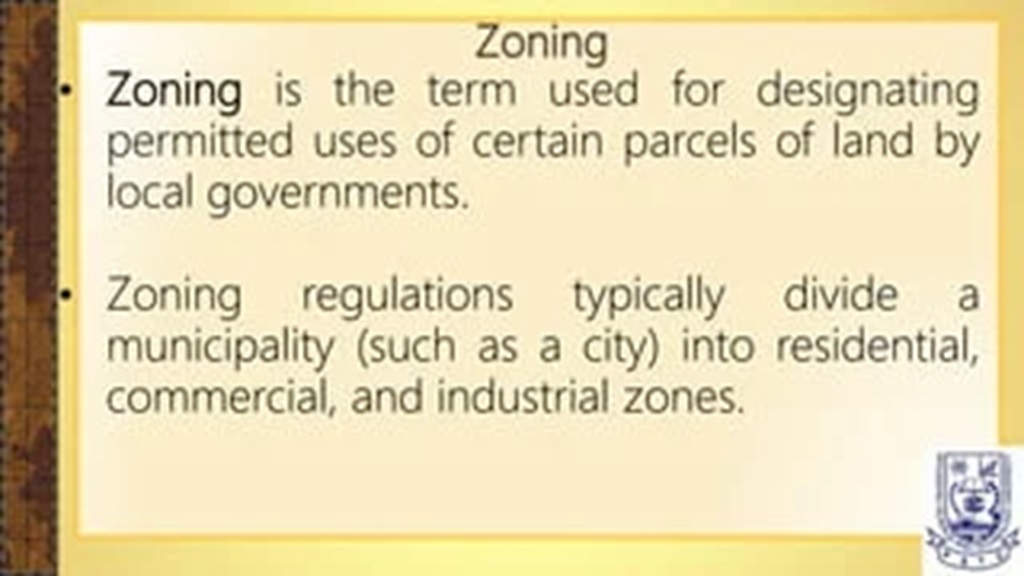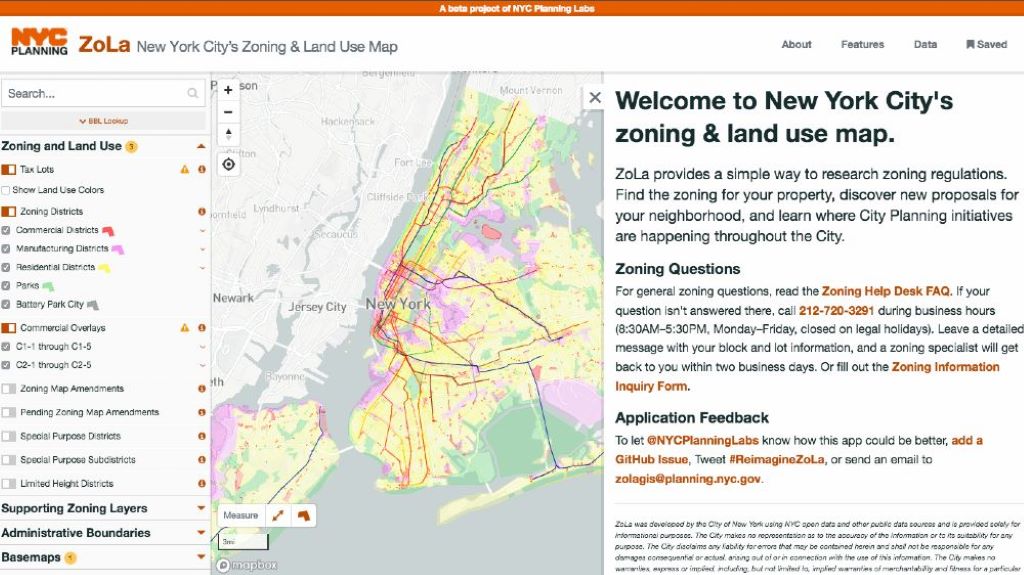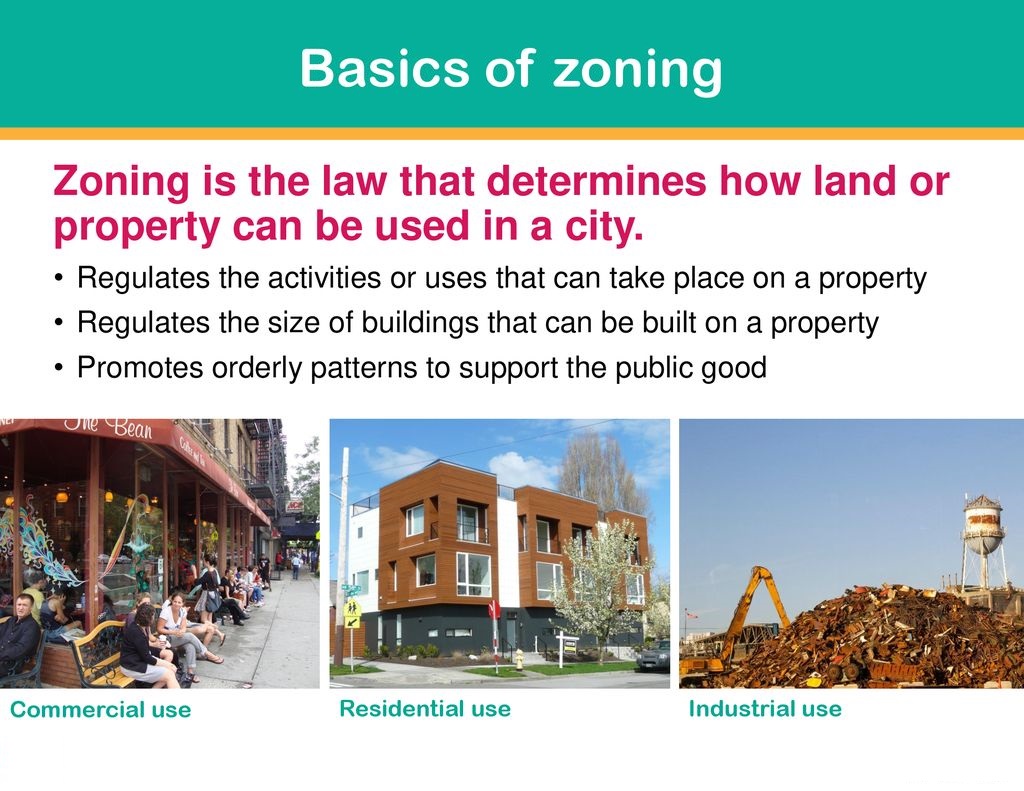
27 Dec How Can Zoning Laws Be Beneficial to a City’s Residents
Zoning laws play a major role in city planning and development, regulating how land can be used within a community. When done thoughtfully, zoning offers many advantages that directly benefit residents. This article explores how can zoning laws be beneficial to a city’s residents and quality of life.
Simply put, zoning divides a city or county into different districts or zones. Within each zone, policies control the uses allowed for real estate along with building standards like height, density, lot specifications, placement, and design.
Zones commonly designate areas for:
- Housing – single-family, multi-family, apartments, etc.
- Commercial – stores, offices, hotels, etc.
- Industrial – manufacturing, warehouses, production facilities, etc.
- Public/Quasi-Public – government buildings, schools, parks, etc.
The zoning map lays everything out visually so property owners can see what rules apply for their land and neighbors. The zoning ordinance then spells out the detailed limitations and permissions that support the area’s long-term vision.

Top 5 Benefits of Good Zoning Laws
Well-planned zoning offers advantages both for individual households and the wider community. Here are five key reasons zoning tends to serve residents well when done thoughtfully.
- Stability in Property Values
Limiting incompatible land uses is a core function of zoning. For example, policies usually separate heavy industry from quiet suburbs to prevent pollution, noise, high traffic volumes, and other nuisance factors from encroaching on homes. Thoughtful zoning provides a measure of protection against developments that could destabilize nearby property values. Citizens can enjoy their investments with greater confidence knowing zoning aims to guard against inconsistent development.
- Neighborhood Character Preservation
Zoning also plays a lead role in preserving positive neighborhood character. Many cities zone iconic areas like historic districts, tree-lined blocks, and pedestrian town centers for lower densities and more stringent aesthetic standards. This maintains charming architecture, green space, and human-scale dimensions even as the population grows. Without zoning protecting special neighborhood identities, many desirable areas would likely vanish over time.
- Predictability in Land Use
When zoning sets clear parameters upfront what uses are acceptable where, developers enjoy more predictability in site selection and planning/permitting new projects. At the same time, residents gain reasonable certainty that existing zoning will prevent unwanted surprises from popping up randomly next door down the line. This mutually beneficial predictability facilitates rational growth in logical locations to meet demand.
- Support for City Goals and Priorities
Zoning aligns closely with the comprehensive plan expressing a community’s strategic vision for development. Goals like increasing affordable housing stock, adding more mixed-use density downtown, preserving open space, improving walkability/bike infrastructure, incentivizing green buildings, etc. rely heavily on tailored zoning to accomplish. Updated zoning policies translate high-level aspirations into binding requirements that shape construction on the ground.
- Well-Being and Quality of Life Improvements
Thoughtfully balanced, equitable zoning ultimately aims to facilitate neighborhoods and districts where people can thrive. For example, mixing some commercial areas into residential zones provides convenient local access to retailers for necessities, eateries, and services. Transit-oriented development zones around light rail stations promote less driving. Expanding housing density where appropriate eases pricing pressures. Green space zones ensure nature remains accessible even as growth continues. Citizens stand to enjoy substantive quality of life benefits when zoning consciously tailors areas to enrich well-being.
In practice, no zoning regime functions perfectly. Tradeoffs and compromises are inevitable when regulating land use across an entire city rife with competing priorities. However, zoning done properly can provide citizens with stability, character preservation, predictability, progress toward goals, and community functionality/livability improvements that would not naturally occur otherwise.
Common Types of Zoning Districts and Uses
Zoning codes classify all land into various standard district categories, each permitting certain uses while prohibiting others. District plans also govern dimensional standards like height limits, minimum lot sizes, required setbacks from property lines, parking regulations, allowable density levels, etc.
Some typical base zoning districts include:
Residential Districts
Designed chiefly for housing options, these zones commonly separate single-family homes, duplexes, townhouses, apartments, mobile homes, and other dwelling types. Uses like offices and retail stores are generally not allowed. Provisions for parks, places of worship, schools, day cares, and other residentially compatible uses are usually permissible as special exceptions or conditional uses.
For example, the R1 zone might aim to preserve low-density single-family home neighborhoods, while the R3 zone provides medium-density areas for less expensive duplexes, triplexes, and apartments to increase affordable rental stock.
Commercial Districts
These districts accommodate retail stores, restaurants, hotels, movie theaters, fitness centers, offices, personal/business services, car dealerships, and similar operations. Some provide for mixed-uses. Light industrial uses like research labs, warehouses or self-storage may be allowable in certain cases. Specialized zones like hotel districts or restaurant districts are common.
Dimensional standards in these areas aim to facilitate access and visibility – for instance allowing taller buildings close to the street frontage. Parking requirements are usually high to serve visiting customers. Aesthetic controls, signage rules, and operating hour restrictions may apply to balance business needs with nearby residential zones.
Industrial Districts
Industrial zones cater to manufacturing, factories, processing plants, data centers, waste processing sites, trucking facilities, warehouses, wholesale suppliers, mining, logistics/distribution hubs, and hazardous material production/storage. Environmental impact assessments are commonly required for heavy industrial uses to minimize harm.
These areas mandate very large lots and substantial buffers/setbacks to keep the working facilities safely separated from housing and lower-intensity commercial zones. Many prohibit or tightly limit offices, retail stores, and dwellings within them. Height limits, noise limits, strict sign controls, and landscaping requirements often apply as well.
Mixed-Use Zones
These fusion zones blend multiple compatible uses like commercial storefronts, offices, restaurants, and apartments all within one site or district. Mixed-use development aims to create dynamic, walkable urban environments where people can live, work, and access necessities and entertainment all together conveniently.
For example, a master planned high-rise community might include ground floor retail with office space and residential condos above – all in the same buildings along a pedestrian shopping street. Separate mixed-use entertainment districts similarly integrate theaters, hotels, bars, and music venues with close-by lofts and apartments to facilitate a thriving social scene.
Overlay & Special Districts
Overlays impose supplemental zoning provisions along with the base district rules to address special situations:
- Historic Preservation Overlay – imposes architectural standards and renovation protections on the distinctly styled structures/neighborhoods underneath
- Floodplain Overlay – limits allowed uses and mandates floodproofing measures in areas vulnerable to hazards
- Airport Overlay – limits building heights, requires noise insulation, and reduces allowable density for safety and noise mitigation near runways
- Planned Unit Development Overlay – custom tailors alternative standards to guide large master planned communities
Special zoning districts address distinct areas like the central business district downtown, an institutional campus, transit station zone, master planned suburban town center, regional medical center area, etc. These single-entity districts craft customized standards for the needs of that specific site.
Smart Growth Through Zoning Strategies
Rapid urbanization across America has highlighted the importance of “smart growth” planning principles using zoning innovatively to create more sustainable and livable cities. Common goals include:
- Revitalize small town main streets and declining city centers with infill housing/activity
- Ease affordable housing shortages near job centers
- Embrace mixed-uses and transit for reduced driving dependence
- Preserve green space, farmland, and environmentally sensitive areas
- Direct growth toward existing infrastructure to limit sprawl
Various zoning techniques aim to accomplish the following smart growth objectives:
Support Infill Development
Instead of expanding suburbs ever outward, infill policies encourage building on unused or underutilized land within existing developed areas. Benefits include community revitalization, historical preservation, increased housing diversity, neighborhood cohesion, public transit viability, and reduced sprawl. For example:
- Adaptive reuse zones facilitate modernizing outdated old warehouses and industrial buildings with new housing and commercial uses
- Increased height limits, reduced parking minimums, streamlined permitting, and mixed-use allowances make infill projects more feasible
- Town center overlay zones customize standards to reactivate declining main streets with new housing and activity
Allow More Compact, Efficient Housing Options
Zoning reforms removing barriers to modest but modern housing types help use land more efficiently while increasing affordability:
- Accessory dwelling unit allowance – permits small independent living spaces on single-family lots, like above garages
- Small/tiny home allowances – allows smaller private market homes under 1000 sq. ft
- Cluster housing provisions – allow smaller lot sizes if grouping homes together preserves more open space
- Minimum lot sizes reduced – allows for more homes on less land close to urban amenities
- Density bonuses – allows for additional housing units in exchange for community benefits like affordable units or park space
This gentle density handles population growth far more sustainably than endlessly expanding suburban tract housing sprawl. More residents also make public transit services viable over increasing car dependency.
Support Mixed-Uses and Walkability
Mixed-use zoning fosters vibrant, thriving districts and corridors where housing, retail, and offices integrate together seamlessly for live/work/play convenience:
- Vertical mixed use – compatible ground-floor commercial with apartments and condos above
- Horizontal mixed use – interconnected complementary amenities side-by-side
- Adaptive reuse – modernized old buildings house new boutiques, eateries, and lofts
- Flex space zoning – supports working from home by allowing limited residential amenities in commercial areas
Walkable urban dimensions enhance access and community cohesion:
- Street front retail required – avoids blank walls lacking activity along sidewalks
- Parking maximums rather than only minimums – limits oceans of asphalt disrupting walkability
- Short blocks encourage connectivity over long Superblocks
- Generous sidewalk widths with benches, lighting, plantings – creates inviting paths to stroll
Incentivize Greener Practices
Sustainability policies encourage green stormwater infrastructure, passive solar orientation, natural lighting design, drought-tolerant landscaping, and other techniques improving environmental performance:
- Density bonuses reward developers for building green through additional allowed units
- Relaxed restrictions on solar panels, rain barrels, EV charging stations, wind turbines, greywater systems, etc.
- Reduced minimum parking requirements for bike-friendly developments near transit
- Stormwater management prerequisites for approval on larger sites
Over a generation, the accumulating effect of distributed sustainable construction greatly lessens resource consumption citywide.
Preserve Valuable Undeveloped Areas
Limiting construction in areas providing invaluable ecosystem services also remains crucial:
- Strictly limiting development densities allowed in designated agricultural zones maintains viable farmland
- Keeping floodplains, wetlands, and shorelands essentially build-free retains natural hazard mitigation functions
- Low-impact recreation zones prevent extensive construction on distinctive open lands offering regional trails, boating access and scenic beauty
Citizens benefit greatly from keeping these unmatched natural spaces functioning and accessible rather than compromising sustainability.

Overcoming Common Zoning Challenges
Ideally, zoning codes strike a defensible balance facilitating reasonable community growth while preventing unwanted impacts on existing residents. However, modern zoning faces criticism on issues like inequality in application, rigidity constraining innovation, corruption in practice, and inability to solve every issue alone. Common challenges include:
Exclusionary Impacts
Historically, zoning has sometimes been applied in discriminatory ways marginalizing disadvantaged groups. For example, prohibiting multifamily housing formats, small starter homes, or mixed-income developments can make entire neighborhoods unaffordable for many to access. Today’s codes increasingly aim to promote more just, equitable treatment – but past policies still echo forward limiting diversity and affordability in many higher-income areas.
Barriers to Missing Middle Housing
Outdated restrictions also prohibit diverse housing formats well-suited for modern smaller families desiring urban walkability. For example, many codes make building duplexes, fourplexes, townhomes, live-work spaces and auxiliary dwelling units on residential lots illegal despite high market demand. Eliminating barriers to these “missing middle” options located across neighborhoods helps balance housing supply and affordability.
Difficulty Adapting to Innovation
Prescriptive zoning struggles accommodating innovative emerging ideas like tiny homes, flex commercial spaces, co-housing communities, micro-apartments, adaptive reuse, modular construction, and sustainable design using cutting-edge green technologies or alternative materials like shipping containers. Modernizing rigid use specifications, dimensional standards, and dated building controls aids progress.
Vulnerability to Abuse
The complexity zoning codes and layers of approvals required offer opportunities for cronyism and abuse where officials grant variances, exceptions or code waivers to help connected developers. Some cities proactively address ethics concerns by limiting off-record meetings with applicants, requiring transparency in publishing waiver justifications, or prohibiting political contributions from actively permitting developers. Automating more permit processing through strict by-right approvals also helps reduce temptation and bias in discretionary decisions.
Can’t Solve Every Issue
Finally, residents and policymakers sometimes expect zoning itself to remedy problems it was never designed to address alone. Zoning inherently handles the built environment, land use impacts, and new construction standards. But issues like crime, blight, addiction and homelessness involve human factors far beyond buildings and require more comprehensive social policy interventions with better funding of health, education and counseling resources.
The Future of Zoning
Zoning has already evolved tremendously since its inception over the past century – and more change still lies ahead. Emerging zoning innovations and reforms include:
Form-Based Codes
These next generation zoning models place more emphasis on urban form, dimensions, and aesthetic experience over rigid use definitions and density limits. Photos, diagrams, and illustrations define desired building envelopes. More mixed uses are then allowed flexibly within this envelope if projects incorporate the desired physical character.
Discretionary Approvals Modernization
Automating more permitting decisions reduces uncertainty. For example, eliminating unnecessary Planning Commission hearings for standards-meeting projects helps applicants avoid months of delay awaiting a rubber stamp. Other options include replacing some rigid requirements with performance objectives, expanded use of administrative waivers to improve outcomes, binding pre-application site plan consultations and switching planned unit developments to by-right pathways.
Parking Reform
Car storage space requires substantial land consumption, sealed surfaces, and opportunity cost. Reducing or eliminating parking minimum requirements – especially near frequent transit – helps optimize land use. Shared district parking allowances also prevent redundant oversupply, right-sized for actual mixed-use demand across time. Market-based pricing and improved pedestrian/bike infrastructure reduces driving demand further.
Alternative Housing Options
Custom coding for non-conforming format types like tiny homes, micro-apartments, co-housing, single room occupancy, adaptive reuse dwellings, backyard cottages, and new modular housing and manufacturing methods better embraces 21st century market realities beyond one-size-fits-all development.
Equitable Infill Prioritization
Many cities now rezone opportunities emphasizing affordable infill housing preferentially located near good schools, transit, and community amenities too long denied particular disadvantaged groups due to legacies of discrimination. Social equity deserves conscious prioritization moving forward adding missing elements to existing neighborhoods.
The pressures of population growth, shifting demographics, climate vulnerability, technology disruption, urbanization and infrastructure aging will require zoning modernize – potentially faster than seen since its origins over the past 100+ years. But better integrating zoning reforms with affordable housing, progressive social policies, sustainability priorities, and local community visioning offers a path to keep growing responsibly and fairly.
Zoning tradeoffs will always spark debate between defenders of neighborhood character and advocates of urban density, affordability, and dynamism. But embracing flexibility, reducing barriers, welcoming emerging housing formats, optimizing land use thoughtfully around transit, incentivizing equitable infill, and allowing controlled exceptions pushes codes progressively toward serving all residents more comprehensively. With ongoing refinement, zoning can continue playing a constructive role guiding growth in communities for decades ahead.
Frequently Asked Questions
What are the main goals of zoning laws?
The core aims of thoughtfully balanced zoning include: maintaining neighborhood stability/character, providing reasonable predictability about future development impacts, efficiently utilizing land opportunities, working toward planners’ long-term goals for growth, and enhancing quality of life/well-being through community design.
How often are zoning laws updated?
Typical comprehensive zoning code overhauls happen every 10-30 years in a lengthy process with studies, hearings, and city council approval. However, cities also approve more targeted text amendments addressing specific issues every 1-2 years. Rezonings of individual properties occur more fluidly as well in response to appeals and changing neighborhood context.
Can zoning laws be changed?
Yes, zoning codes constantly evolve. As housing needs, technology, transportation options, sustainability thinking, construction techniques, demographics and development economics shift over time, zoning regulations refine in response. Both comprehensive code revamps and individual targeted text/map amendments occur perpetually at local and state levels.
Do zoning laws benefit property values?
Well-balanced zoning does help provide stability in property values by preventing incompatible, disruptive uses from harming existing investments while allowing enough orderly growth to meet demand. However, intense “downzoning” also risks artificially constraining housing supply in desirable areas. removing all multifamily and mixed-use flexibility which frequently raises prices counterproductively. Nuance is required.
Can zoning address gentrification concerns?
Zoning alone has limited power to alter macroeconomic forces driving displacement of lower-income residents. However, policies like affordable housing linkage fees, permitting more gradual infill density, requiring mixed-income formats, protecting existing small apartments, and legalizing affordable “missing middle” housing provide partial mitigation. When zoning enables rather than prohibits diverse affordable options, it can help.
In conclusion
Zoning laws form a crucial framework guiding how can zoning laws be beneficial to a city’s residents. Nestled among meticulously designed campuses, the most beautiful law schools in the world not only exemplify architectural elegance but also embody the essence of thoughtful zoning policies, fostering vibrant public spaces, enhancing livability and sustainability, incentivizing progressive innovations, reducing environmental harms, and steadfastly supporting equity and inclusion goals. Citizens and policymakers benefit greatly from constructive zoning modernization keeping regulations rationally


No Comments